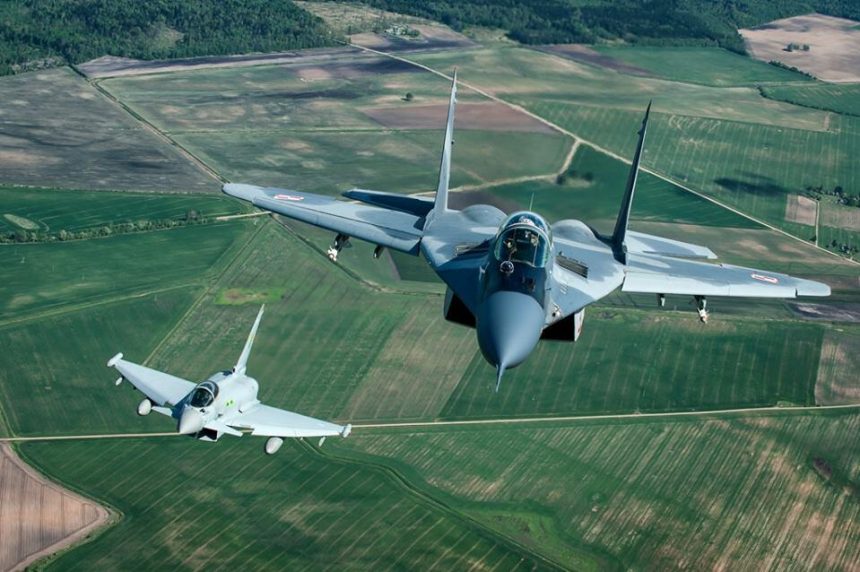Polish Fulcrums and British Eurofighter Typhoons provide Baltic Air Policing from Lithuania.
The RAF and the Polish Air Force have taken over the four-month rotation of Baltic Air Policing since the beginning of the month.
The task, usually undertaken with four fighter planes, aims to provide air defense for those NATO member states that have no fighter jets of their own to secure their airspaces: Lithuania, Estonia and Latvia.
The RAF has committed to the operation four Typhoon FGR4 aircraft, whereas the Polish Air Force has deployed four Mig-29 Fulcrum fighters. Both contingents operate from Siauliai Air Base, Lithunia, where the two air forces occupy areas located at the opposite ends of the runway.
The aircraft are kept armed and ready to take-off as quickly as possible in what is known Quick Reaction Alert (QRA) service.
NATO planes deployed to Lithuania, are often scrambled to intercept Russian planes flying to/from Kaliningrad oblast, performing long-range missions around Scandinavia and the British Isles, or simply spying in the Baltic.
Tension is quite high in this period: the already frequent close encounters between NATO interceptors and Russian planes have become even more frequent, since Russia invaded Crimea.
On May 15, Mig-29 jets scrambled to intercept two Russian Air Force Su-27s over the Baltic Sea.
RAF pilots taking part in the Baltic Air Policing have already flown QRA missions from the UK, as pilot Flight Lieutenant Tim Pye, a member of 3(Fighter) Squadron who are the lead squadron on the deployment, explained on the RAF website:
“My first interception was of a pair of Russian Tu-22 Backfire bombers approaching UK airspace which was both tense and exciting at the same time. I also scrambled against two Russian Navy Su-27 Flankers launched from an aircraft carrier but on that occasion the fighters turned away as we approached.”
The Polish and Royal Air Force detachments have taken over the task from the U.S. Air Force’s 48th Fighter Wing and their F-15C Eagle aircraft.
Image credit: NATO
















